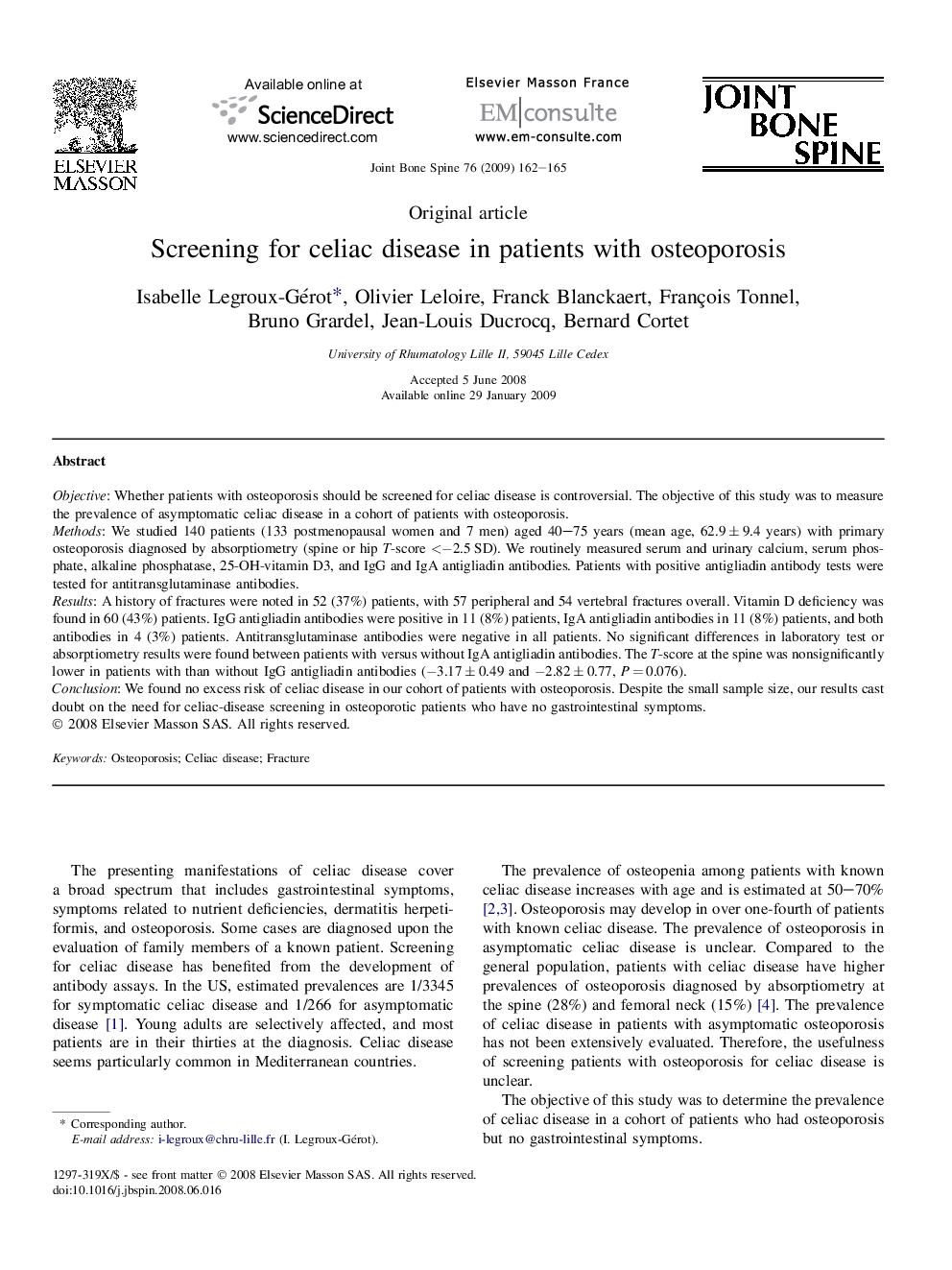| Article ID | Journal | Published Year | Pages | File Type |
|---|---|---|---|---|
| 3366730 | Joint Bone Spine | 2009 | 4 Pages |
ObjectiveWhether patients with osteoporosis should be screened for celiac disease is controversial. The objective of this study was to measure the prevalence of asymptomatic celiac disease in a cohort of patients with osteoporosis.MethodsWe studied 140 patients (133 postmenopausal women and 7 men) aged 40–75 years (mean age, 62.9 ± 9.4 years) with primary osteoporosis diagnosed by absorptiometry (spine or hip T-score <−2.5 SD). We routinely measured serum and urinary calcium, serum phosphate, alkaline phosphatase, 25-OH-vitamin D3, and IgG and IgA antigliadin antibodies. Patients with positive antigliadin antibody tests were tested for antitransglutaminase antibodies.ResultsA history of fractures were noted in 52 (37%) patients, with 57 peripheral and 54 vertebral fractures overall. Vitamin D deficiency was found in 60 (43%) patients. IgG antigliadin antibodies were positive in 11 (8%) patients, IgA antigliadin antibodies in 11 (8%) patients, and both antibodies in 4 (3%) patients. Antitransglutaminase antibodies were negative in all patients. No significant differences in laboratory test or absorptiometry results were found between patients with versus without IgA antigliadin antibodies. The T-score at the spine was nonsignificantly lower in patients with than without IgG antigliadin antibodies (−3.17 ± 0.49 and −2.82 ± 0.77, P = 0.076).ConclusionWe found no excess risk of celiac disease in our cohort of patients with osteoporosis. Despite the small sample size, our results cast doubt on the need for celiac-disease screening in osteoporotic patients who have no gastrointestinal symptoms.
